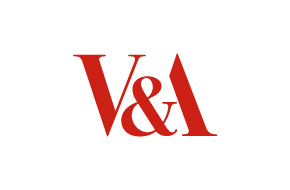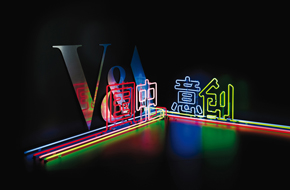Masterpieces of Chinese Painting 700-1900
V&A, London 26 October 2013 – 19 January 2014
Supported by the Friends of the V&A; Restaurant Partner Ping Pong;
Travel Partner Viking River Cruises

Chen Rong. Nine Dragons (detail) 1244
Museum of Fine Arts, Boston. Photograph © 2013 Museum of Fine Arts, Boston
The V&A has been working with some of the greatest collections in China, including The Palace Museum, Beijing; Dunhuang Academy; Liaoning Provincial Museum; Shanghai Museum; and Tianjin Museum to borrow magnificent paintings for its major autumn exhibition Masterpieces of Chinese Painting 700-1900.
The exhibition is the most ambitious survey of one of the world's greatest artistic traditions and gathers together the finest examples of Chinese painting created over a 1200-year period. On display are more than 70 works including?some of the earliest surviving Chinese paintings as well as other exceptionally rare works loaned from all over the world. From small-scale intimate works by monks and literati to a 14-metre-long scroll painting, many of the paintings are being shown in Europe for the first time.

Portrait of Gao Yongzhi as Calligrapher-Beggar
Ren Yi 1887. The Palace Museum, Beijing.
© The Palace Museum Collection
The exhibition examines the recurrent themes and evolving aesthetics characteristic of Chinese paintings and looks at the constant interplay between tradition and innovation. It considers how paintings were created for a variety of settings from temples, palaces, domestic houses and private gardens and in a range of formats from banners, albums and hand-held fans to portable handscrolls such as Emperor Huizong’s Auspicious Cranes and hanging scrolls such as Landscapes in the Manner of Old Masters by Wang Jian. Materials, including a large chunk of ultramarine pigment created from lapis lazuli discovered in a 10th-century artist’s studio and studio equipment reconstructed according to a 14th-century manual reveal the technical process and traditional techniques employed.
Martin Roth, Director of the V&A said: "The V&A has been collecting and exhibiting Chinese art since the Museum was founded. It is an honour to present this once-in-a-lifetime experience of seeing the greatest examples of Chinese painting together and understanding how they were created. We are indebted to our numerous lenders around the world for allowing us a rare opportunity to present these magnificent masterpieces, a number of which are national treasures and have never before left Asia."
The exhibition is organised chronologically and thematically in six successive periods to chart the evolving styles and subject of painting. It begins by exploring paintings made for temples 700-950. These works are predominantly drawn from Dunhuang, a remote region in the North West. The double-sided ceremonial banner Bodhisattva in Monastic Dress Standing at Prayer showing a sacred and enlightened figure has been hung as a three-dimensional display allowing it to be appreciated as originally intended.
The growing enthusiasm for the natural world and the rise of landscape painting between 950 and 1250 is illustrated through monumental yet meticulously detailed landscapes such as Yan Wengui’s Landscape with Pavilion. This section also includes the celebrated Nine Dragons by Chen Rong, considered to be one of the oldest and finest scrolls of this subject.
Between 1250 and 1400 small groups of monks and scholars created paintings for private display which channelled their inner thoughts and emotions. Subject matter moved away from depicting reality to a more stylistic approach, often laden with literary, philosophical and personal associations. In Wang Mian’s Fragrant Snow at Broken Bridge, the early flowering plum which traditionally heralds the arrival of spring, instead blossoms through snowy branches - a potent emblem of purity and endurance in adversity.
The political stability and economic prosperity of the Ming dynasty stimulated a demand for painting. Artists returned to working on silk and using expensive pigments, cities such as Hangzhou, Nanjing and Suzhou became important new centres for painting. Subject matter ranged from romantic characters or episodes in history and literature, topographical views of famous sites and gardens and rare animals and plants. Nostalgic evocations of earlier classical periods such as Qiu Ying’s Saying Farewell at Xunyang, which draws on the bright blue and green landscapes reminiscent of the Tang dynasty to convey a fairytale quality and Du Jin’s Court Ladies in the Inner Palace, which shows ladies playing football in the palace before the custom of foot binding became commonplace.

Auspicious Cranes. Possibly Emperor Huizong
c. 1112 Liaoning Provincial Museum.
© The Liaoning Provincial Museum Collection
The final period in the exhibition 1600-1900 explores an age of artistic rivalry showing how painters competed with both their contemporaries and their predecessors, especially in the fields of landscape painting and the depiction of plants. At 14 metres long, the spectacular masterpiece Flowers on the River by Bada Shanren is the longest scroll in the exhibition and one of the longest paintings in the world. It shows a superb and intricate handling of ink, created when the artist was 72 years old.

Qiu Ying. Saying Farewell at Xunyang (detail)
First half 16th century
The Nelson-Atkins Museum of Art, Kansas City
Photograph: John Lamberton
During the 18th and 19th centuries, when the country was ruled by the Qing, Western art became an increasingly significant artistic force. Techniques of linear perspective and chiaroscuro, modified to suit the Chinese aesthetic, were adopted to create the illusion of depth and light. The exceptionally long scroll Prosperous Suzhou by Xu Yang, noticeably draws on a Western use of perspective to depict urban life inside the city walls receding to the far distance. Fascination with European painting was not confined to the Imperial Court. In his Portrait of Gao Yongzhi as a Calligraphy Beggar, Ren Yi utilises European ideas including a naturalistic depiction of an eye seen from the side for the first time in Chinese figure painting.

Installation of 'Court Ladies Preparing Newly Woven Silk' at the V&A, image copyright Victoria and Albert Museum, London
Tickets £12 (concessions available). To book tickets visit www.vam.ac.uk/chinesepainting
The exhibition curator is Hongxing Zhang, senior curator in the V&A’s Asia Department
Travelling to the Wonderland
An installation by Xu Bing at the V&A
2 November 2013 – 2 March 2014
Supported by Jing & Kai
Celebrated Chinese artist Xu Bing has transformed the V&A’s John Madejski Garden into an ethereal Arcadia inspired by the classic Chinese fable Tao Hua Yuan (The Peach Blossom Spring). The V&A invited Xu Bing to create a major new work to coincide with the Museum’s exhibition, Masterpieces of Chinese Painting 700 – 1900.
Copyright Xu Bing studio.
Based on the Chinese fable written by the scholar Tao Qian (or Tao Yuanming, 365-427) in 421AD, about people who lead an ideal existence in harmony with nature and each other, unaware of the outside world, Xu Bing’s installation is deliberately ‘non-real’. ‘Tao Hua Yuan is a long lost dream and we don’t know if its existence is real or pure fiction.’ (Xu Bing)
This dream-like landscape has been created around the central water feature of the John Madejski Garden, built up from layers of thinly-cut stones collected from five different places in China to represent mountains. Clusters of ceramic houses, each one handmade and coloured to reflect the diverse traditional styles of houses from the different provinces have been placed among the stones. For example, rocks taken from the Tai Hu Lake in the lower Yangtze River region are accompanied by houses in Suzhou garden style. The same meticulous detailing also applies to the positioning of particular ceramic animals in relation to the type of stone.
Modern elements have also been introduced into the landscape to represent the coexistence of ancient and new in contemporary China and remind the viewer of present, everyday life. Some of the ceramic houses will contain small LCD screens with cartoon animations, others will contain lights to make them seem inhabited. Lighting and mist will change the atmosphere of the piece depending on the time of day.
To complement Travelling to the Wonderland, the V&A is presenting a display of works on paper by Xu Bing in the T.T. Tsui Gallery. This includes one of his large-scale ‘New English Calligraphy’ pieces, based on Tao Qian’s historical writing on Tao Hua Yuan, shown for the first time at the V&A. In addition, there are albums of paintings representing Xu Bing’s vision of Tao Hua Yuan and sketches showing the process of creating the garden installation.

Relationships and activity
Exhibitions presented in the last few years in Chinese venues include The Golden Age of Couture at the Hong Kong Heritage Museum in 2009, and A Century of Olympic Posters in the Capital Museum, Beijing (70,053 visitors) and the Liaoning Provincial Museum in Shenyang (140,626 visitors in 6 weeks) both in 2008. In 2010 the V&A digital art exhibition Decode was shown at the Central Academy of Fine Arts, Beijing and the V&A collaborated with the British Museum to produce an exhibition of Indian Temple Sculpture for the Shanghai Museum.
Because of its unique links to the Great Exhibition of 1851, the V&A was active in marking Shanghai Expo 2010. Designs for the exciting British Pavilion were displayed at the V&A in 2009. We are also proud to have worked with the Shanghai Expo Bureau, Shanghai Museum and the Bureau International des Expositions (BIE) towards two exhibitions for the Shanghai Expo.

The V&A and Chinese art
The Victoria and Albert Museum possesses one of the most comprehensive and important collections of Chinese art in the west. The V&A acquired its first group of Chinese artefacts in 1852. Today, the V&A Chinese collection amounts to over 15,000 objects, with fine examples from all branches of Chinese art including ceramics, jade, metalwork, lacquer, textiles, furniture, sculpture, ivory, bamboo, rhinoceros horn, glass, paintings, manuscripts and prints. The collection has particular strength in the applied arts of later dynastic China, after AD1500, and the V&A continues to collect actively, with a focus on excellent examples of contemporary art and design.








